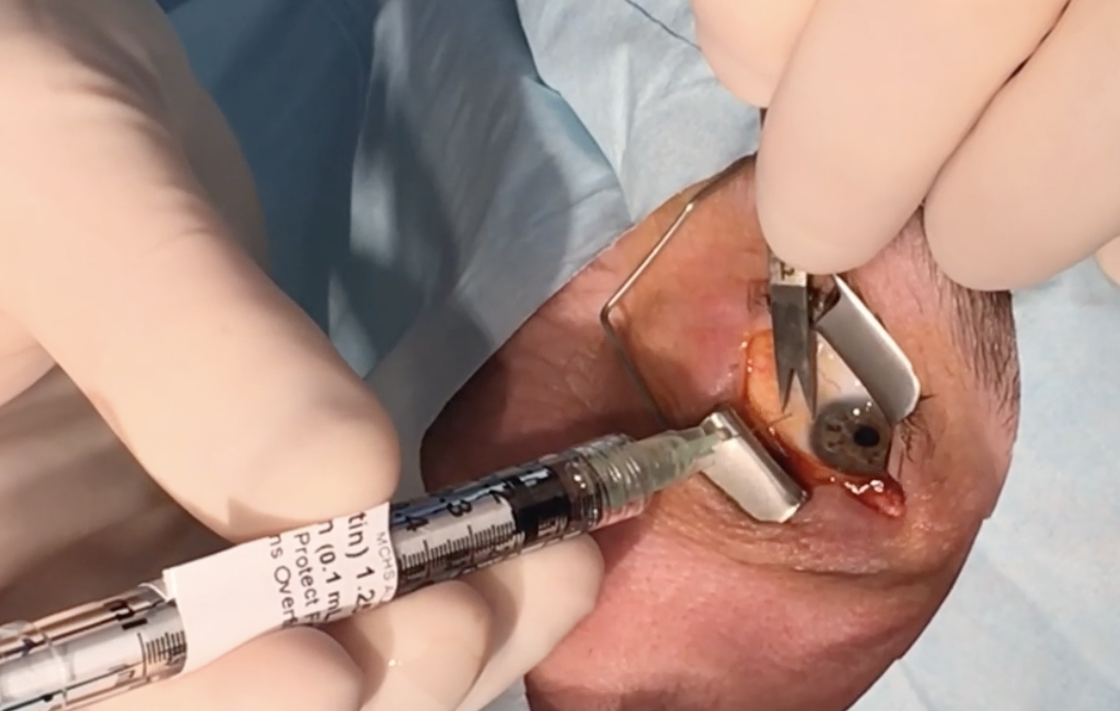 |
| All those intravitreal injections can take a toll on IOP over time, study says. Photo: Leonid Skorin Jr., DO, OD, MS. Click image to enlarge. |
Findings from a recent study suggest eyecare providers may have good reason to monitor intraocular pressure (IOP) in patients undergoing treatment with intravitreal anti-VEGF injections. The elevated risk of IOP associated with this common therapy could pose a threat to some patients, especially those with glaucoma, by increasing their chances of developing glaucomatous optic neuropathy and consequent irreversible vision loss.
Since open-angle glaucoma patients are more likely to also have retinal vein occlusion, researchers analyzed a cohort of patients from the Study of Comparative Treatments for Retinal Vein Occlusion 2 who had macular edema associated with central retinal vein occlusion. The aim of the study was to evaluate the incidence and patterns of IOP-related events in eyes receiving long-term anti-VEGF injections.
Each participant received a monthly injection of either bevacizumab (1.25mg) or aflibercept (2.0mg) for six months. Afterward, those who exhibited a good response continued with the same regimen, while those who had a poor response began alternative therapy for months six through 12: three monthly aflibercept injections followed by treat-and-extend aflibercept dosing for patients who originally received bevacizumab and an intravitreal dexamethasone implant every three months for those who received aflibercept. IOP and other ocular measurements were collected at months 24, 36, 48 and 60 during follow-up.
Of all 312 study participants, 25 (8%) had an IOP over 10mm Hg from baseline through month 60, and five of these patients had an IOP higher than 35mm Hg. There were no differences detected in IOP events between patients receiving bevacizumab vs. aflibercept. Two percent of patients ended up undergoing surgery to lower IOP within the 60-month follow-up period.
“The 60-month Kaplan-Meier cumulative incidence of IOP elevation more than 10mm Hg over baseline was 0.13, and the 60-month Kaplan-Meier cumulative incidence of IOP higher than 35mm Hg was 0.02,” the study authors wrote. “The present study did not find a significant association between the cumulative number of anti-VEGF injections and the proportion of eyes with an IOP-related event, but we did find a greater number of IOP-related events in individuals who received intravitreal anti-VEGF therapy beyond 12 months.”
Make sure to closely monitor patients receiving intravitreal injections of any anti-VEGF drug, especially if their course of treatment lasts or lasted beyond a year. Special caution should be taken when treating glaucoma or macular edema patients on anti-VEGF who already have elevated IOP at baseline.
Aref AA, Scott IU, VanVeldhuisen PC, et al. Intraocular pressure–related events after anti–vascular endothelial growth factor therapy for macular edema due to central retinal vein occlusion or hemiretinal vein occlusion. JAMA Ophthalmol. October 28, 2021. [Epub ahead of print]. |


